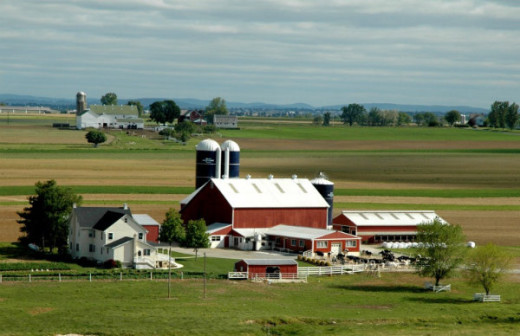Read an excerpt from this article below. You can download the full article by using the link at the end of the excerpt.
LOWELL, MI – As it happened, the rain stopped on May 15, 2006, the morning that a caravan of late model vehicles dropped a swirl of local dignitaries, including a state senator, one of Michigan’s wealthiest philanthropists, and two TV reporters on Lloyd Flanagan’s farm in the green countryside 25 miles from Grand Rapids. Mr. Flanagan, a sturdy man whose family raised crops and livestock since 1947 on the corner of 4 Mile Road and Lake Murray Avenue, greeted his guests with a smile and a hearty handshake.
In this part of West Michigan modesty is a virtue. Mr. Flanagan listened quietly, shifting his weight and fingering the bill of his worn baseball cap as speakers extolled the farm’s natural beauty, the family’s good work, and the $580,000 that Kent County raised to buy the development rights and make sure 145 acres of good Flanagan ground would be forever used solely for agriculture. At the program’s end, Mr. Flanagan and his wife, Kathleen, who have two sons and a daughter, received a handsome sign commemorating the occasion.
“It’s been in the family all these years,” Mr. Flanagan said afterwards. “I want it preserved. I want to see it stay a farm and see it set up so my son can take over.”
The ceremony, gracious in its simplicity, marked the second farm permanently protected by Kent County’s four-year-old Farmland Preservation Program. But what was most significant was the event’s location in a county that not only is among the largest farm producers in Michigan, but also is among the state’s fastest growing and most politically conservative. Here in a region where mixing the basic ingredients of farmland preservation — open ground, government oversight, and public spending — often arouses considerable ire, a new and much more supportive attitude about the value of farms, farmers, and farmland is quickly developing.
The switch in allegiance is as evident in this part of Michigan as it is in countless other regions of the nation where local and state campaigns to protect farmland have surmounted partisan, class, race, and political impediments to become a powerful, though little noticed economic and political movement in the United States. From New England to southern California, Florida to Washington state, and countless places in between, local planning officials are teaming up with elected leaders, non-profit conservancies, and the farm community to spend nearly $500 million annually to preserve more than 400,000 acres of orchard and crop land, according to farmland conservancies.
Though the nation’s farmland protection efforts also include enacting new zoning rules, taking steps to enhance farm profitability, and enforcing state right-to-farm laws in order to help farmers stay in business, paying farmers to permanently set aside land solely for agriculture is seen as far and away the most effective solution to farmland loss. The reason? “It’s voluntary,” says Eric Larson, executive director of the San Diego County Farm Bureau, who’s working to establish a farmland protection program in southern California, in one of the nation’s largest farm counties. “The other important element is it doesn’t cost much. It’s much less expensive than building roads and sewers and all the other costs that come out of land development.”
This year alone Pennsylvania, Maryland, and New Jersey will spend $386 million on farmland preservation by themselves. The number of local land trust organizations, critical institutions to farmland protection, grew to 1,537 in 2003, according to the Land Trust Alliance, 324 more than in 1998. The Trust For Public Land, a national land conservancy, found that since 1994, 384 local and state ballot measures to protect farmland have been put before voters; 312 or 81 percent were approved.

“We’re seeing farmland conservation initiatives approved by voters by equal margins, usually more than 60 percent, in counties carried by George Bush, and counties carried by John Kerry,” notes Will Abberger, the associate director of conservation finance based in the Trust For Public Land’s office in Tallahassee, Florida. “This is not, by any stretch, a partisan issue at the local or state level.”
… article continues over next seven pages with discussion of farmland conservation strategies.